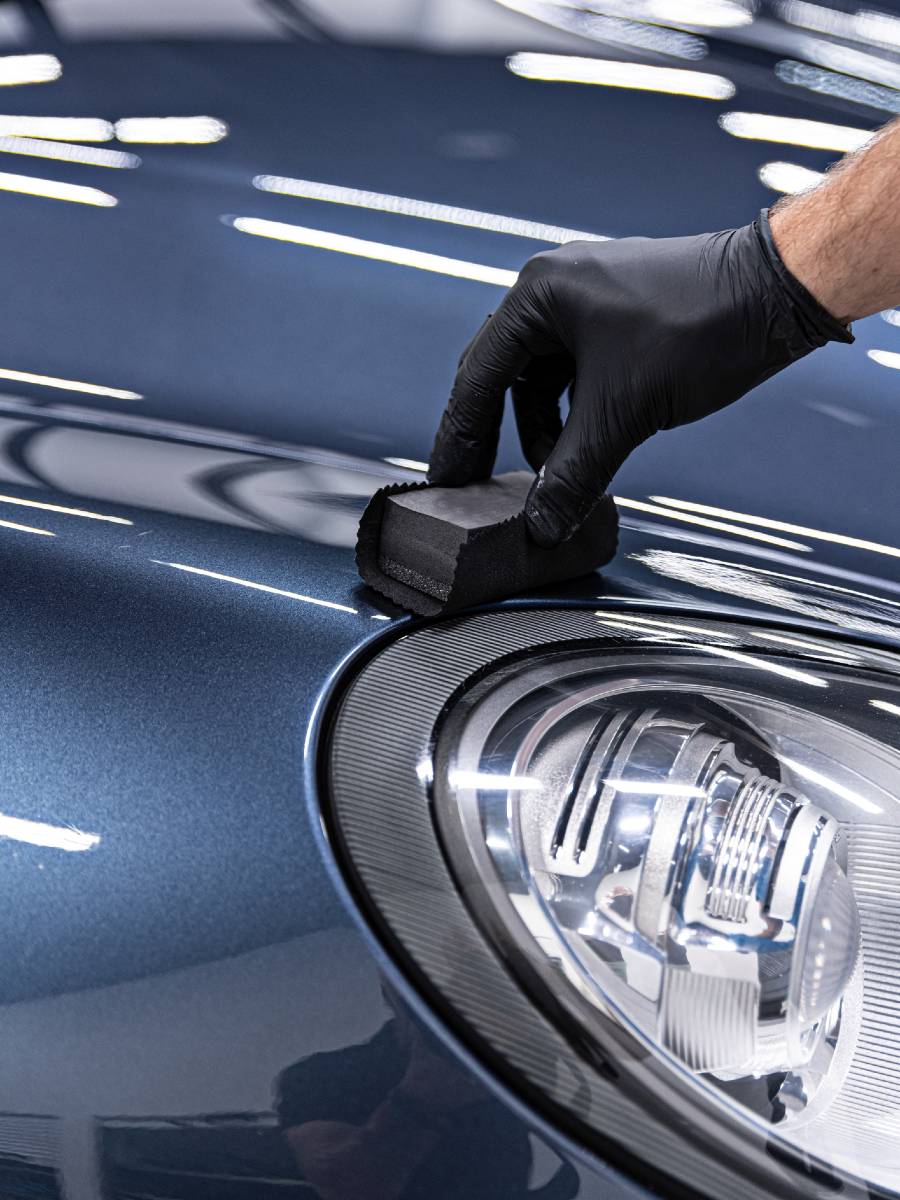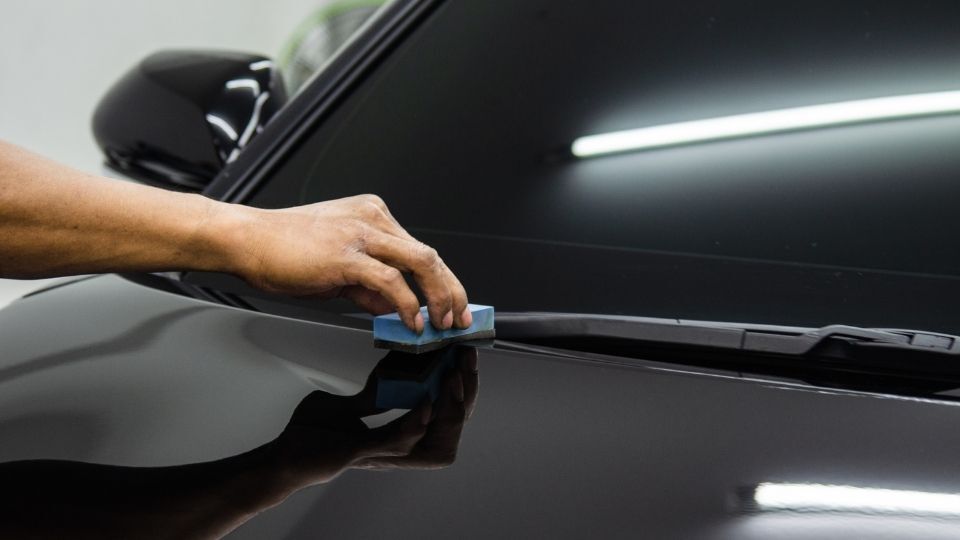Ceramic Layer vs. Traditional Wax: Which Supplies Better Long-Term Security?
The discussion in between ceramic coverings and typical wax for car security has gathered substantial focus among automotive fanatics and professionals alike. While both satisfy of protecting paint, their distinctions in durability, application, and lasting maintenance prices might influence a customer's choice. Ceramic finishings flaunt remarkable longevity and resistance to ecological aspects, yet the intricacy of their application increases inquiries about availability and functionality. As we check out these contrasting alternatives, it becomes necessary to think about not only the instant benefits however also the implications for lorry care over time.
Summary of Ceramic Covering
Ceramic coating has acquired substantial popularity amongst auto fanatics and detailers alike due to its innovative protective qualities. This ingenious innovation is developed to create a durable, hydrophobic guard over a vehicle's paint surface area, substantially enhancing its resistance to ecological contaminants such as dirt, UV rays, and chemical spots. Unlike conventional wax, which gives a short-term layer of defense, ceramic coatings bond at a molecular degree with the paint, providing resilient resilience-- usually extending beyond 2 years with correct maintenance.
The application process entails meticulous preparation of the automobile's surface, consisting of cleaning and polishing to guarantee optimal attachment. As soon as used, the covering treatments to form a durable layer that not just includes deepness and gloss to the paint yet also streamlines upkeep. With its hydrophobic homes, ceramic coating allows water and dirt to move off even more quickly, lowering the regularity of washes and decreasing the risk of swirl marks.
Additionally, ceramic finishes are offered in various formulas, enabling users to select items customized to their certain requirements and preferences. Generally, ceramic finishing represents a considerable innovation in paint security modern technology, supplying remarkable performance contrasted to standard alternatives.
Introduction of Conventional Wax
Commonly considered a staple in automotive treatment, wax acts as a prominent choice for those seeking a straightforward method to boost and safeguard their lorry's paint - ceramic coating. Automotive wax commonly comprises natural components, such as carnauba, or artificial substances, developed to create a protective layer on the surface area of the paint. This layer not just enhances the car's gloss and radiate but also gives a barrier versus ecological contaminants
The application of wax is generally straightforward, making it easily accessible for both specialists and DIY fanatics. Once applied, wax calls for a treating duration, after which it sets to form a safety covering.
However, while wax works for boosting the aesthetic charm of a car, it is essential to keep in mind that the security it supplies may require extra frequent reapplication compared to different items, such as ceramic finishes. In general, traditional wax remains a preferred choice for those focusing on ease of use and instant aesthetic improvement.
Sturdiness and Long Life Contrast
While both ceramic coatings and traditional wax offer safety advantages for vehicle paint, their resilience and durability vary dramatically. Traditional wax, generally made from all-natural carnauba or synthetic polymers, typically offers a protective layer that lasts around three to six months. This relatively short life expectancy requires routine reapplication to preserve optimal protection.
On the other hand, ceramic coatings are crafted from innovative nanotechnology, creating a covalent bond with the paint surface. This leads to a robust, hydrophobic layer that can endure for two to five years, depending upon the product and environmental problems. The premium resilience of ceramic finishings is associated to their chemical framework, which provides enhanced resistance to scratches, UV rays, and oxidation.

Security Versus Environmental Elements
Safeguarding a car's paint from ecological elements is important for maintaining its look and value gradually. Vehicles are regularly exposed to a selection of elements, including UV rays, bird droppings, tree sap, acid rain, and road gunk, every one of which can compromise the integrity of the paintwork.
Ceramic finishings provide a robust protection versus these ecological aggressors. Unlike typical wax, which can degrade rapidly under UV direct exposure, ceramic finishes form a resilient, hydrophobic layer that withstands the unsafe results of sunlight and toxic wastes. This sophisticated modern technology produces a chemical bond with the vehicle's surface, providing remarkable security that lasts for years, even in severe conditions.
Conventional wax, while simpler to use, commonly calls for frequent reapplication and supplies limited resistance to contaminants and UV rays. With time, it can damage down, leaving the paint prone to scrapes and oxidation. On the other hand, ceramic layers keep their safety high qualities longer, considerably decreasing the danger of paint damages and making sure that the automobile preserves its visual allure. As an outcome, ceramic layers are significantly recognized as the remarkable option for long-lasting protection versus ecological factors.
Application and Maintenance Distinctions
The techniques of application and subsequent upkeep for ceramic layers and conventional wax vary considerably, impacting the total user experience and performance of each product. Ceramic finishings need a more intricate application procedure, generally including surface preparation that includes washing, sanitizing, and brightening the lorry. As soon as the surface area is prepared, the ceramic coating is applied in a regulated environment, usually needing expert know-how to make certain appropriate treating and bonding to the paint.

While both items enhance vehicle appearance, the longer-lasting protection supplied by ceramic finishes might validate their initial financial investment, despite the even more demanding application process. On the other hand, standard wax remains a prominent choice for those looking for a simpler, albeit short-term, service.

Conclusion
To conclude, ceramic finishes show significant benefits over standard wax in terms of sturdiness and environmental protection. With a life expectancy expanding 2 to 5 years and exceptional resistance to UV rays, dirt, and chemical discolorations, ceramic coverings use a much more reliable option for long-term lorry maintenance. Although the application procedure might need expert know-how, the resulting cost savings and minimized regularity of reapplication highlight the worth of ceramic coverings for those looking for optimum vehicle protection.
The dispute in between ceramic layers and traditional wax for automobile defense has amassed considerable attention among automobile enthusiasts and professionals alike. Unlike typical wax, which provides a short-term layer of defense, ceramic finishes bond at a molecular degree with the paint, using long-lasting durability-- usually extending beyond 2 years with correct upkeep.
While both ceramic layers and conventional wax deal safety benefits for automotive paint, their toughness and long life vary dramatically. For cars and truck lovers seeking lasting security, ceramic layers present an engaging advantage over conventional wax items.
In final thought, ceramic coverings show considerable advantages over typical wax in terms of resilience and environmental defense.